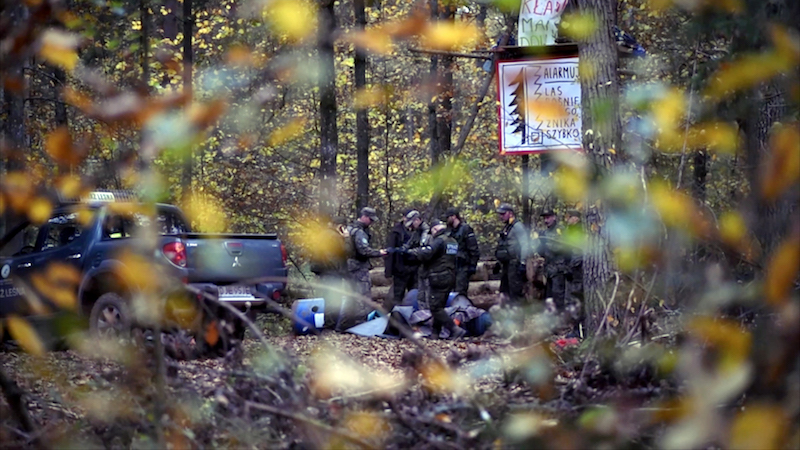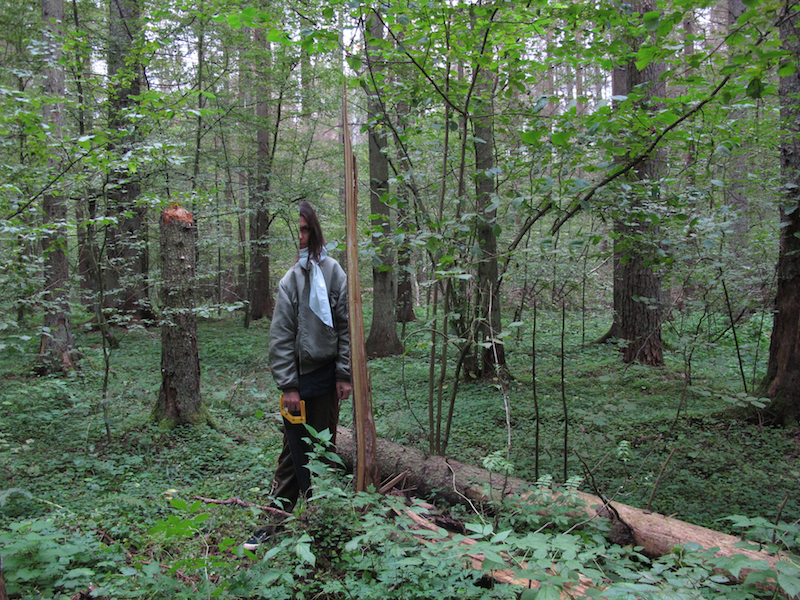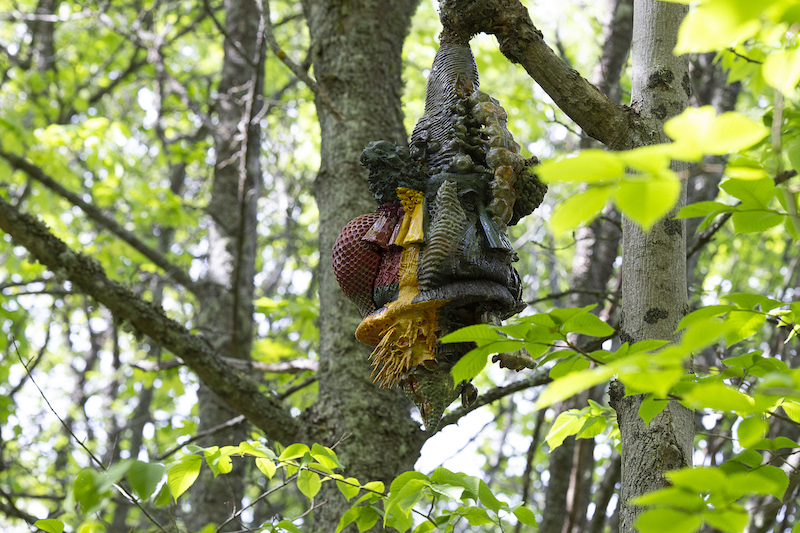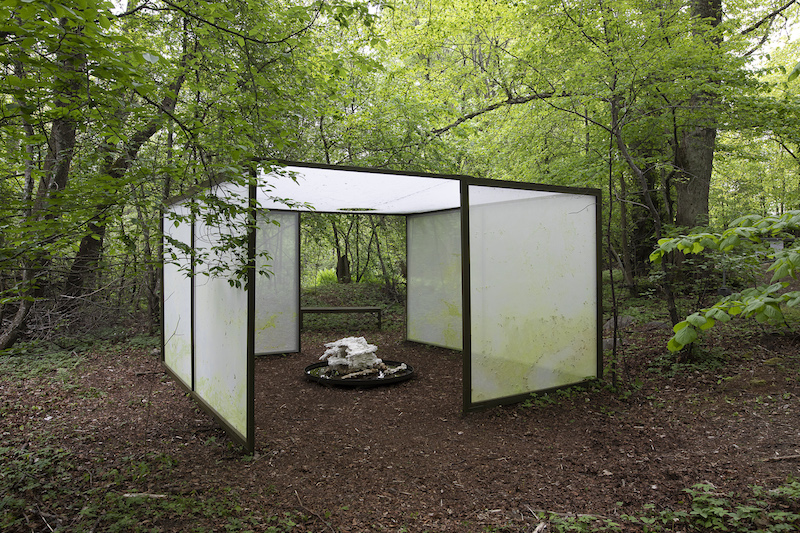by Alison Hugill // July 4, 2023
This article is part of our feature topic Wilderness.
The notion of “wilderness” has a certain mythological inflection today—it is not merely synonymous with nature as a category, but suggests an untouched or pure quality. Living in a world fully saturated by settler colonialism, capitalism and environmental crisis, it’s hard to imagine the existence of this kind of immaculate space, except in our wildest dreams.
The so-called “Anthropocene”—a popular term in the art world for a long time now—is used to denote a period or era in Earth’s history during which humanity has had a significant impact over nature. But this designation raises many questions: to what extent are humans distinct from nature? which humans (or corporations) have the most significant impact? how might this impact have been different, for example, if we had respected indigenous land practices?

Kinga Kiełczyńska: ‘10 millions+1,’ 2018–19, video still, 10:25 min // Courtesy of the artist and Exile Gallery
Wilderness creeps into our hyper-industrialized reality as a way of talking about a kind of nostalgic or lost space. As such, the idea of “rewilding” has recently become a rallying call to action. A form of ecological restoration, proponents aspire to greatly reduce human influence on our environments. Approaching the same political stakes from another angle, our new features topic positions itself on the side of nature and its eventual emancipation, if such a thing is possible. In this vein, we’ve engaged with artists and curators who bring wilderness to the forefront of their practices, whether as material or as conceptual raison d’etre.

Kinga Kiełczyńska: ‘Białowieża: Chapter 1,’ 2017, digital print // Courtesy of the artist and Exile Gallery
In William Kherbek’s interview with Polish artist Kinga Kiełczyńska, she talks about her recent work focussing on the Białowieża forest, which straddles the border of Poland and Belarus. Known as Europe’s largest “primeval forest,” the area is fiercely protected by several state bodies and activist groups. But Kiełczyńska questions whether this protection is always in the interest of wilderness itself. In her other work about invasive species, she pointedly asks what, in fact, constitutes “good” vs. “bad” wilderness, and what we as humans deem worthy of being protected. Speaking with Kherbek, she reflects: “The idea of something wild and untouched is a very romantic idea, but it doesn’t exist anymore. We said goodbye to it a long time ago.”

Adrián Villar Rojas: from the series ‘The End of Imagination,’ 2023, Helsinki Biennial, Vallisaari, Helsinki // © HAM/Helsinki Biennial/Viljami Annanolli
In another contribution to the topic, Adela Lovric will review this year’s Helsinki Biennial, titled ‘New Directions May Emerge’ and taking place across multiple venues in and around Helsinki, both institutional and natural. In general, biennials have a reputation for more destruction than preservation, and this year’s curator Joasia Krysa has aimed to change that, asking: how can we use biennials for the wider regeneration of things? Engaging with nonhuman protagonists through its participating artists—including Berlin-based artists Jenna Sutela and Danielle Brathwaite-Shirley, among others—the biennial is organized in three main conceptual threads: contamination, regeneration and agency. Mobilizing “cross-pollination” as it relates to both wilderness and ideas, Krysa conceives of the exhibition as a force for healing and repair.

Alma Heikkilä: ‘coadapted with,’ 2023, Helsinki Biennial, Vallisaari, Helsinki // © HAM/Helsinki Biennial/Kirsi Halkola
In her ongoing research and curatorial project ‘Rewilding the Museum,’ Dehlia Hannah examines how “environments” are imagined, represented, mediated and produced within and beyond the gallery today. Explaining this impetus further in the context of a recent conference in Denmark, Hannah wrote: “From rock strata to ice cores, wastelands to wilderness, we have come to understand the earth itself as an archive of inscriptions; as a collection to be studied, inventoried, conserved, or restored.” Contributor Alison Sperling will interview Hannah about why she interprets the museum as a microcosm of our global human influence and artifice and what its “rewilding” might entail.
How might contemporary art address our relationship to other species, and to processes of decay and renewal, in a non-interventionist manner? Is the very definition of art (and its relationship to artifice) an antithesis to wilderness? Through our upcoming interviews and exhibition reviews, we hope to scratch the surface of what makes wilderness distinct from nature, and whether or not it can be said to even exist as such today.



















